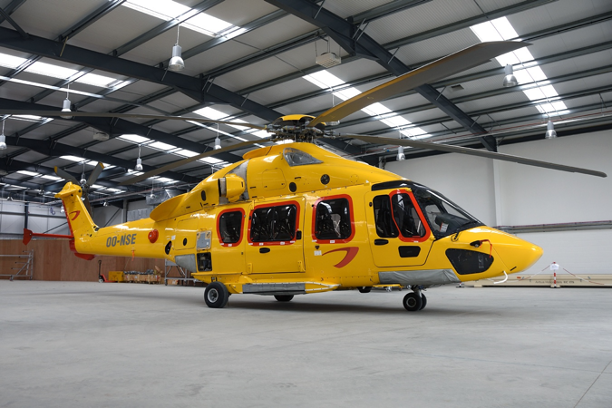Monthly Program Profile: Airbus Helicopters H175

The H175 is a super-medium-class, twin-engine helicopter produced by European manufacturer Airbus Helicopters that is based on the company’s EC 175 type. Specifically representing the commercial designation of the EC 175 B, the unveiling of the then-EC175 took place on Feb. 24, 2008, at Heli-Expo. Subsequently, the helicopter made its first flight in Marignane, France, on Dec. 17, 2009, and the EC 175 type was certified by the European Union Aviation Safety Agency (EASA) on Jan. 30, 2014. Although it retains the Eurocopter type, a change to the commercial designations of most of the Airbus Helicopters products—replacing the EC designation with the H designation following the change in company name from Eurocopter to Airbus Helicopters—was revealed in 2015 and resulted in the EC175 being rebranded as the H175.
According to the EC 175’s EASA type certificate data sheet (TCDS), the helicopter’s maximum passenger seating capacity is 18. Airbus Helicopters’ commercial materials note that the possible configurations of the H175’s cabin include an 18-seat layout for “commercial passenger transport” and a configuration for offshore operations that seats 16, as well as 10- and 8-seat arrangements for business and private aviation. Overall, the H175’s executive and VIP configurations can accommodate between 6 and 12 passengers. H175 airframes for business aviation and private operators are marketed as the ACH175 and can seat as many as 12 passengers.
The EASA TCDS also states that the EC 175 B is certified for single-pilot operations in visual flight rules (VFR) conditions, while operations in instrument flight rules (IFR) conditions may require a second pilot. Along with the H135, H145 and H160, the H175 is equipped with Airbus Helicopters’ Helionix avionics suite, the features of which include a “dual-duplex, [four]-axis automatic flight control system (AFCS)” that is promoted as providing operators with precision, stability and reliability. The capabilities of the H175’s AFCS include an automatic approach mode called “Rig’N Fly” that is used for operations to oil and gas platforms, the ability to automatically recover should the pilot(s) become disoriented, a one-engine failure management mode that is “hands off” and terrain-collision prevention during the final approach phase of flight. The safety of H175 operations is further enhanced through capabilities and features such as automatic dependent surveillance–broadcast (ADS-B) Out, a helicopter terrain awareness and warning system (HTAWS), the ability to perform localizer performance with vertical guidance (LPV) approaches, a synthetic vision system and a traffic alert and collision avoidance system (TCAS II).
Mission and Performance
Limitations of the EC 175 B include a power-on never-exceed speed (VNE) of 175-kt. indicated airspeed (KIAS) and an inflight maximum operating altitude of 15,000 ft. For takeoff and landing, however, the maximum operating altitude is reduced to 13,000 ft. In addition to being certified for flight in VFR conditions during day and night—as well as in IFR conditions—the helicopter is also approved to fly in blowing and falling snow, as well as in “limited icing conditions.” Airbus commercial materials state that the H175 has a maximum range and maximum endurance of 590 nm and 5 hr. 45 min., respectively, with a “fast cruise speed” of 155 kt. also possible. Comparatively, EC 175 B airframes that are marketed as the ACH175 have a maximum endurance of 4 hr. 30 min., a 151-kt. maximum cruise speed and a 613-nm range.
Variants
The H175 has a five-blade main rotor and three-blade tail rotor, with the helicopter powered by a pair of Pratt & Whitney Canada PT6C-67E turboshaft engines that are equipped with a dual-channel full authority digital engine control (FADEC) and which have a maximum takeoff power of 1,775 shp. Beyond the H175’s 17,196-lb. maximum takeoff weight (MTOW), a useful load of 6,797 lb. is possible in a configuration for “offshore transportation,” while the helicopter’s maximum cargo sling load is 5,952 lb. Furthermore, the total capacity of the airframe’s standard fuel tank is 691 gal. (4,555 lb.).